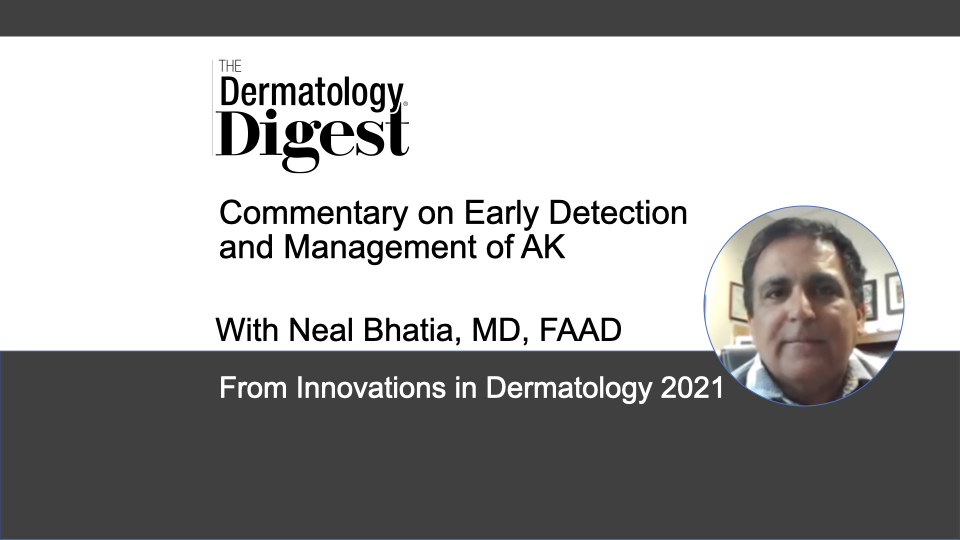Dr. Neal Bhatia discusses AK prevention strategies, including OTC and in-office treatments, histological AK progression to SCC, SCC incidence, and the need to treat AKs you can and can’t see with multiple modalities.
Neal Bhatia, MD, FAAD, is Vice President of the American Academy of Dermatology, and practices at Therapeutics Dermatology, San Diego, Calif.
“I’m a bigger believer in preventing the problem before it shows up, and I try to advocate that with the incorporation of the field treatments and topical therapies in conjunction with the destruction therapies in the office,” says Neal Bhatia MD, FAAD.
In his presentation, “Early Detection and Management of Actinic Keratosis,” at the 2021 Innovations in Dermatology Meeting, Dr. Bhatia discussed the importance of a multimodal approach for the treatment and management of actinic keratosis (AK). Prevention, he says, is key, and he likes to use a dental analogy to communicate the message to patients.
“My favorite comparison of actinic keratosis is to cavities,” he says, explaining that touch is the most readily available and easiest technology to use.
“We tell patients to feel for anything that catches, just like the dentist uses the probe to feel for cavities. And a lot of patients think that actinic keratoses are dry skin or they’re just rough spots and age spots, but when we counsel them on what they actually are and how they detect them—by feel as well as by sight—it makes them a little bit more aware that these could potentially grow and, even more so, that there are maybe 10 more on the way.”
While detection devices, such as a dermatoscope and optical coherence tomography (OCT) can be helpful, the everyday dermatologist effectively uses a physical exam and patient counseling, says Dr. Bhatia. And an important part of counseling is getting patients to recognize that treatment extends to more than just the visible AK—it includes those not yet visible but on the way.
“I’m a bigger believer in preventing the problem before it shows up, and I try to advocate that with the incorporation of the field treatments and topical therapies in conjunction with the destruction therapies in the office,” he says.
In this video, Dr. Bhatia discusses prevention strategies, including OTC and in-office treatments, histological progression of AK to squamous cell carcinoma (SCC), SCC incidence, and the need to treat AKs you can and can’t see with multiple modalities.


